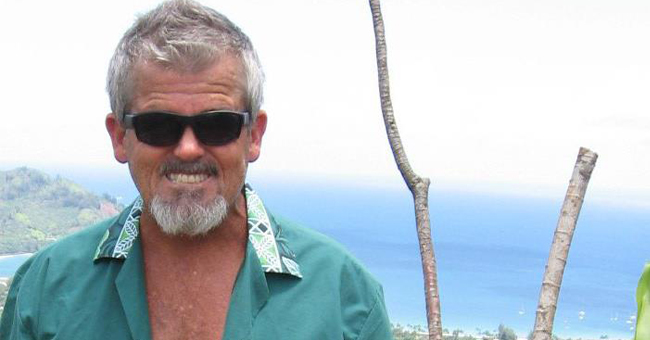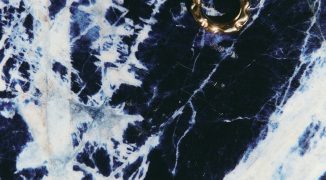Anyone who’s set foot in a tiki revival bar, from California to Las Vegas to Georgia, has probably enjoyed the work of “Bamboo Ben” Bassham. The world-renowned tiki whiz is responsible for the woodwork in dozens of tropical mixology destinations and hundreds of rum enthusiasts’ home bars. His knack for detail and creative use of materials is not only unparalleled: it’s in his blood.
Eli Hedley, Bassham’s grandfather, was doing tiki before there was a word for it. When the Depression hit his family in Oklahoma, he picked up stakes and headed west, eventually settling in Carmel, California. “[My family] was from the Dust Bowl,” explains Bassham, “so naturally, they fell in love with the ocean.” Hedley reveled in the “beachcomber” lifestyle, constructing huts and small houses out of driftwood, flotsam, and jetsam that the tides washed up. “He found stuff on the beach and just started putting it together,” Bassham says. Los Angeles took quick note, and when tiki exploded after World War II, Hedley found himself in high demand for his seaside creations.
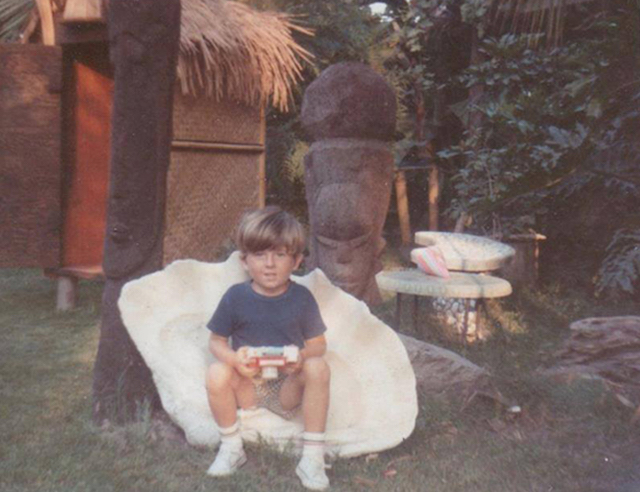 Ben as a young boy, pictured at his grandfather’s Island Trade Store.
Ben as a young boy, pictured at his grandfather’s Island Trade Store.
Bassham’s upbringing in this vacation-like environment sounds like a Technicolor Hawaiian fantasy. Hollywood stars made frequent escape to the tropical bliss of his family’s Carmel home, where Hedley would entertain them with drinks poured into flowers. “We’d go to Don the Beachcomber in Corona del Mar,” says Bassham, “and our parents would put us up on stage with the Smothers Brothers.”
It didn’t immediately stick, though: the heir to tiki spent over a decade outside his family’s tradition. Coming of age in the 1980s meant that punk, not Polynesian, was his aesthetic of choice. He made furniture, but the style was Southwestern stone. Eventually he grew tired of taking direction from interior decorators and, like his grandfather, struck out on his own in search of something more fulfilling. It’s not surprising he returned to tiki.
In Huntington Beach, where Bassham still lives, “if you have something on your lawn in the morning, everyone thinks you’re having a yard sale,” says Bassham. So when he once left a mini tiki bar he’d built for his own luau party out overnight, neighbors asked to take it home. He’s built these modestly sized personal bars ever since for fans the world over, and they’re still the lifeblood of his business.
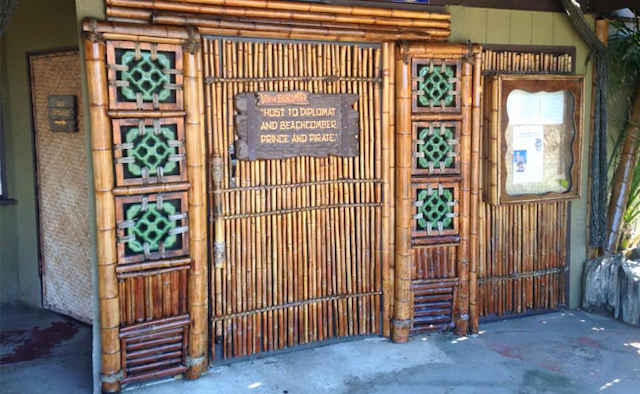 Ben recreated the original entrance to Don the Beachcomber (circa 1934), but had to do so using only black-and-white photographs for reference.
Ben recreated the original entrance to Don the Beachcomber (circa 1934), but had to do so using only black-and-white photographs for reference.
It didn’t take long for these smaller bars to draw bigger clients. One of his first was an Army veteran who dreamed of rum while stationed in Iraq; when he came home, he called Ben and asked for help making the dream come true. Hale Tiki opened less than a year later in Augusta, Georgia. It’s closed now, but Bassham remembers it fondly as a key early creation.
Bassham often builds his commercial projects in mad flurries. Once he’s completed a walkthrough and drawn up plans in collaboration with the bar’s owners, he and his team—sometimes including the head bartender “in a construction jumpsuit,” he laughs—get to work; until the project is finished, they’ll sleep only a few hours a day. (Often, inside the space: Bassham once eschewed a hotel room rented by the bar’s owner in favor of a mattress next to the bar, taking naps inside rolls of foam.)
He keeps the bar itself simple and focused on why everyone’s there in the first place: the drinks. When he built Alameda, CA’s Forbidden Island, the owner wanted “a really elaborate, sleek back bar that hid the booze,” Bassham remembers. “I told them, ‘You’re not selling bamboo paneling.’” Instead, he sourced wood shelving from reclaimed local lumber. Not that visitors can see it—”It’s all covered up with rum plaques now,” says Bassham, referencing the awards regulars earn for sampling all the bar’s rums.
Every project is different, something that keeps Bassham constantly inspired. Building out an empty warehouse offers endless, if sometimes overwhelming, possibilities, while redecorating an existing bar is an exercise in creative reshaping. Smaller bars require a careful balancing of low ceilings and narrow spaces with the heavy decorating necessary for a complete tiki experience. He doesn’t think of himself as taking particular inspiration from his grandfather. “But I’m sure,” he admits, “that he’s always subconsciously in there.”
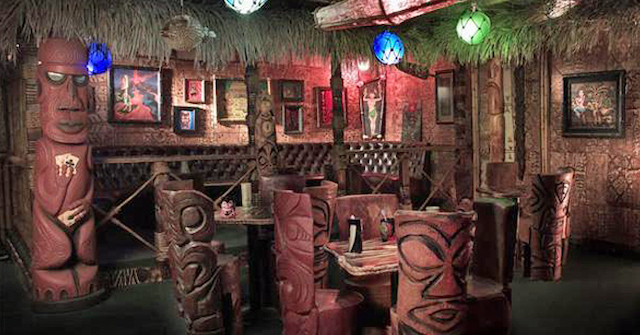 The interior of Frankie’s Tiki Room in Las Vegas, designed by Ben.
The interior of Frankie’s Tiki Room in Las Vegas, designed by Ben.
Working in cocktail culture, and tiki specifically, gives Bassham an opportunity to create tiny vacations for those not fortunate enough to live in his California sunshine. “If you’re working in a New York high rise,” he says, “you can look forward to that little sip of bliss when you leave.” It doesn’t take much for drinkers to learn he’s the man behind their favorite tiki bars, and he likes hearing from new fans.
“I can’t imagine doing anything else,” says Bassham. “Every time I wonder if I should try something new, I get another project, and I remember why I love it.”


